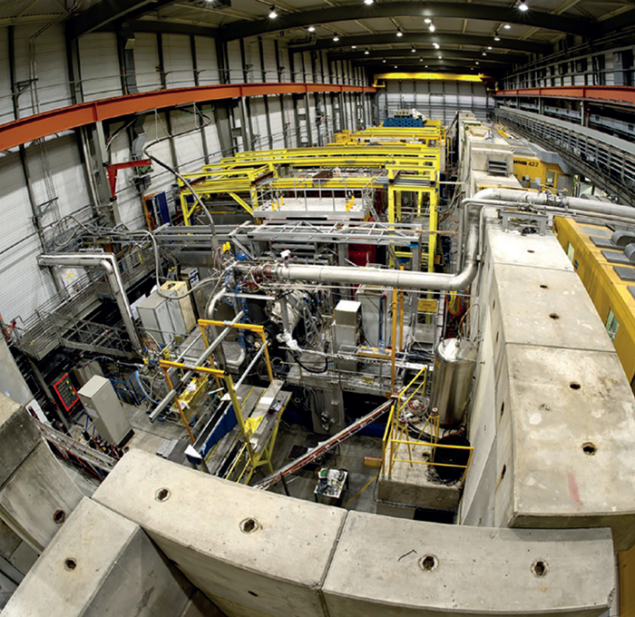
Image credit: CERN-EX-1105182-01.
The COMPASS experiment at CERN has made the first precise measurement of the polarizability of the pion – the lightest composite particle built from quarks. The result confirms the expectation from the low-energy expansion of QCD – the quantum field theory of the strong interaction between quarks – but is at variance with the previously published values, which overestimated the pion polarizability by more than a factor of two.
Every composite system made from charged particles can be polarized by an external electromagnetic field, which acts to separate positive and negative charges. The size of this charge separation – the induced dipole moment – is related to the external field by the polarizability. As a measure of the response of a complex system to an external force, polarizability is directly related to the system’s stiffness against deformability, and hence the binding force between the constituents.
The pion, made up of a quark and an antiquark, is the lightest object bound by the strong force and has a size of about 0.6 × 10–15 m (0.6 fm). So to observe a measurable effect, the particle must be subjected to electric fields in the order of 100 kV across its diameter – that is, about 1018 V/cm. To achieve this, the COMPASS experiment made use of the electric field around nuclei. To high-energy pions, this field appears as a source of (almost) real photons, on which the incident pions scatter. Such pion–photon Compton scattering, also known as the Primakoff mechanism, was explored in the early 1980s in an experiment at Serpukhov, but the small data sample led to only an imprecise value for the polarizability of 6.8±1.4 (stat.) ±1.2 (syst.) × 10–4 fm3, where the systematic uncertainty was underestimated, presumably.
COMPASS has now achieved a modern Primakoff experiment, using a 190 GeV pion beam from the Super Proton Synchrotron at CERN directed at a nickel target. Importantly, COMPASS was also able to use muons, which are point-like and hence non-deformable, to calibrate the experiment. The Compton π–γ → π–γ scattering is extracted from the reaction π–Ni → π–γNi by selecting events from the Coulomb peak at small momentum transfer. From the analysis of a sample of 63,000 events, the collaboration obtained a value of the pion electric polarizability of 2.0±0.6 (stat.) ±0.7 (syst.) × 10–4 fm3 – that is, about 2 × 10–4 of the pion’s volume. This value is in good agreement with theoretical calculations in low-energy QCD, therefore solving a long-standing discrepancy between these calculations and previous experimental efforts to determine the polarizability.
Although this measurement is the first to allow a self-calibration, the accuracy is still below the quoted uncertainty of the calculations. With more data already recorded, the COMPASS collaboration expects to improve on this result by a significant factor in the near future, and thereby probe further a benchmark calculation of non-perturbative QCD.







